OVERVIEW OF QUESTIONS AND ANSWERS SERIES
July to December 2004
| July | August | September | October | November | December |
July 2004
July 2004 (Part 1)

Many people, who are used to measuring their progress by the number of techniques they have learnt, would wonder how advanced can one get with just three techniques. They make a big, common mistake in the practice of any art.
Click here to enter.
July 2004 (Part 2)

Practicing chi kung dedicatedly and correctly will surely improve your life. That is as sure as two plus two equals four. But you must practice genuine chi kung, not just gentle physical exercise that is often mistaken to be chi kung. The difference is not in the forms, but in the way how the forms are practiced.
Click here to enter.
July 2004 (Part 3)

Just because you and other people have not experienced or understood some phenomena does not mean that the phenomena cannot be true. There are many things you and most Western people have not experienced, or even heard of. And some of these things are not even mystical. Take chi for example. Many Westerners have never heard of chi, and some Taiji masters do not believe in chi, although chi actually forms the core of Taijiquan.
Click here to enter.
August 2004
August 2004 (Part 1)

The Shaolin Temple was first built at Songshan in Henan Province in north China in the 4th century. It was burnt twice in ancient times, and then restored. But nowadays when people mention the burning of the Shaolin Temple, they usually refer to its burning by the Qing army in more recent times — in the 19th century. But what many people do not realize is that this burning concerned not the Shaolin Temple in the north, but the Shaolin Temple in the south. There were two southern Shaolin Temples -- another fact which many people may not know and which therefore may cause much confusion.
Click here to enter.
August 2004 (Part 2)

Your approach is traditional, i.e. just practice stance training and the art of flexibility for a few months without doing other things else. This was the way of the masters in the past. Nevertheless, as our modern situations are different, you may make some slight modification. Besides practicing the stances and the art of flexibility, which still constitute the main part of your training session, you can add some other aspects of training.
Click here to enter.
August 2004 (Part 3)
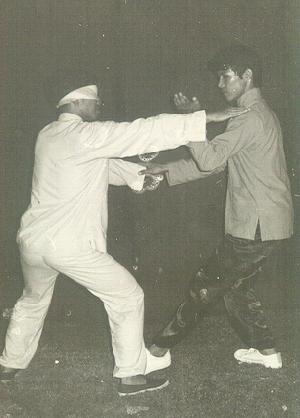
Great Wing Choon masters, including Sifu Yip Mann and the first patriarch Yim Wing Choon, were generally small sized, yet they were tremendously powerful. The reason, of course, was that they had tremendous internal force. But many modern Wing Choon masters are muscular, and some even encourage external strengthening like weight lifting and body building. Obviously somewhere down the generation lines, internal force training was lost.
Click here to enter.
September 2004
September 2004 (Part 1)
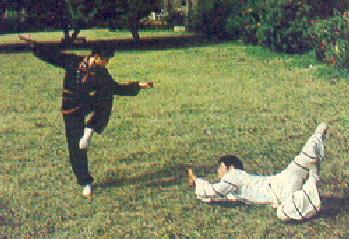
If you look into what and how they train, this pathetic condition becomes understandable. What they train are mainly external forms and unmethodical sparring. How they train consists mainly of muscular exertion and hard conditioning. There is little or no training of mind and energy. And it is the training of mind and energy, which are characteristic of great kungfu training like Shaolin Kungfu and Taijiquan, that enables the practitioners to use their kungfu training to enrich their daily life.
Click here to enter.
September 2004 (Part 2)
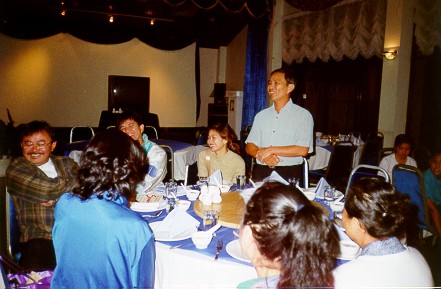
It confirms for us that we do not just practice chi kung, but are dedicated to a great art that enriches our lives and the lives of other people irrespective of religion, race and culture.
Click here to enter.
September 2004 (Part 3)

Qi, or energy, is physical as well as mental and spiritual. Scientists have discovered that qi consists of electro-magnetic waves, subsonic waves as well as flows of sub-atomic particles. Qi is also mental. It consists of flows of conscious impulses. A very high level qigong master can transmit his qi to influence the behaviour of others — although for moral reasons he would not do so. Qi is also spiritual. At low levels qi can uplift a person's spirit, making him cheerful and hopeful.
Click here to enter.
October 2004
October 2004 (Part 1)
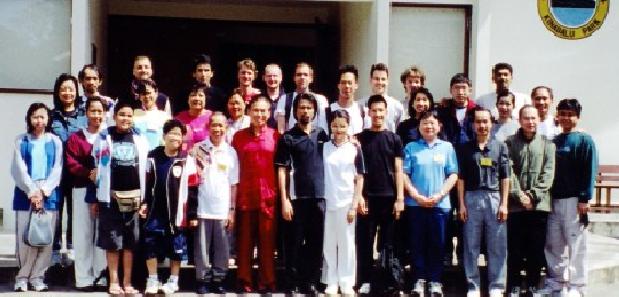
No matter what techniques a person has learnt, if he practices them long enough, he will master the techniques. There are two important points about this fact — though many people may not be aware of them or appreciate their importance. One, if he starts with low-level techniques, he will eventually become a master of low-level techniques. If he starts with high-level techniques, he will eventually become a master of high-level techniques. Two, if his methodology is inferior, he will take a long time to master the techniques. If his methodology is superior, he will take a relatively short time.
Click here to enter.
October 2004 (Part 2)

An important point I have attempted to impress upon both Western scientists as well as modern qigong masters is that to derive the best benefits, qigong should be practiced and studied in its own paradigm, and not in a Western scientific paradigm. This is only logical. An art, any art, developed in its own culture, and therefore is best expressed and explained in its own cultural reference.
Click here to enter.
October 2004 (Part 3)

You feel discouraged because you are impatient. If you examine your attainments which occur within such a short time, and compare your progress with the majority of people who practice chi kung all over the world, you should be happy with your results. Remember, even though our chi kung produces fast and remarkable results, it still takes time.
Click here to enter.
November 2004
November 2004 (Part 1)

Understanding this will give members of our Shaolin Wahnam family a better perspective in their training. Our attainments are often regarded as fantastic when compared to what most other qigong practitioners of the world today attain. But compared to past cultivators or to our potential, most of us are only at the beginning.
Click here to enter.
November 2004 (Part 2)
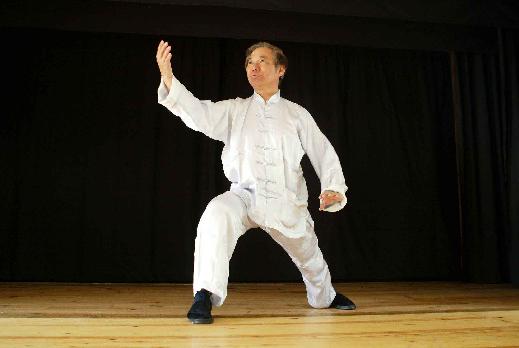
Then how would a master counter? He doesn't think! All the thinking as well as appropriate counters have been “programmed” into him in his prior training. He just moves spontaneously, directed by his qi flow. In the combat itself, he is usually not consciously aware of his exact movements, but his movements directed by qi flow in a meditative state of mind are always correct!
Click here to enter.
November 2004 (Part 3)
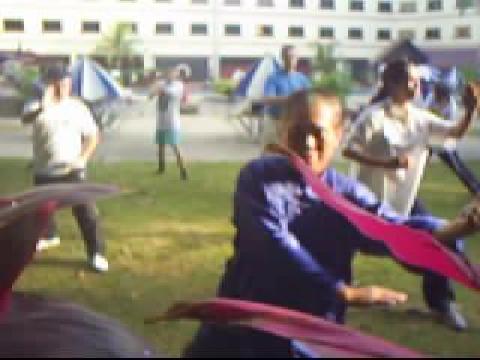
In principle, practicing “Pushing Mountains” is the same as practicing any Taijiquan forms, like “Lifting Water” and “”Green Dragon Shoots Pearl”. They are all dynamic patterns. Hence, in Taijiquan forms you can also tap energy from the cosmos. It is not just circulating qi that is already there.
Click here to enter.
December 2004
December 2004 (Part 1)
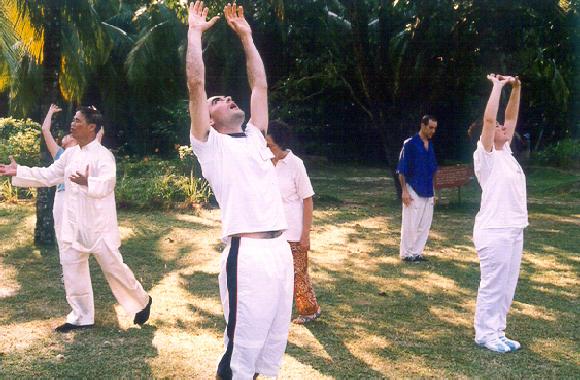
A “satori” is a spiritual awakening whereby a practitioner experiences transcendental cosmic reality, often described as a glimpse of the Original Face, of Tao or of God. Such an experience may be manifested in different ways, but it always fills the practitioner tremendously with awe, wonders, gratitude, an outpour of love and joy. In my early years of teaching, satoris were infrequent, but now they occur quite frequently. In today's Advanced Chi Kung Course in Soria, Spain (16th August 2004), for example, many people experienced satoris.
Click here to enter.
December 2004 (Part 2)
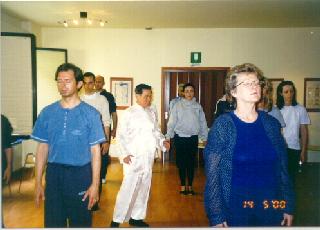
Western medicine would benefit tremendously from this Chinese wisdom. From the perspective of Chinese medicine, chronic, degenerative diseases like asthma, diabetes, heart failure and kidney problems are disorders of qi, whereas psychiatric diseases are disorders of shen. But qi and shen are not in the conceptual framework of Western medicine. Western medicine only treats the physical body. Hence, Western treatment for chronic, degenerative diseases and psychiatric diseases has not been satisfactory.
Click here to enter.
December 2004 (Part 3)

No matter how much and for how long you study fighting arts, if you do not practice sparring methodically, your fighting will still be kid fighting. This is the situation of the great majority of those who practice kungfu or wushu today, including “masters”. They can perform beautiful kungfu or wushu forms in solo, but can never apply their forms in fighting or even sparring. If you only study but never practice, you may not even fight like a kid.
Click here to enter.
